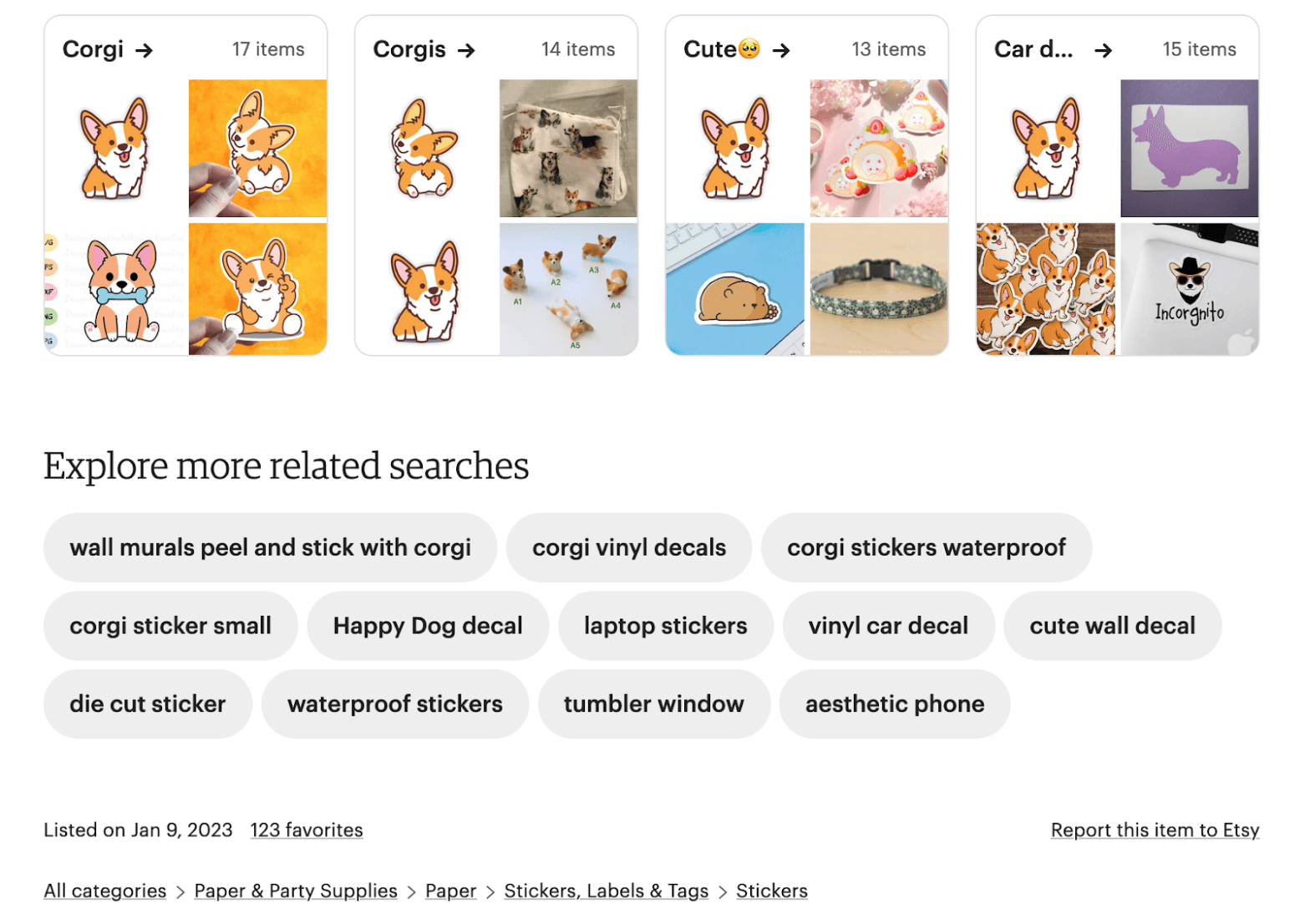Enrich your catalog and upgrade your SEO with Miso.ai

One of the most challenging aspects of being a growth PM for any marketplace or retailer is that it’s your job to make sure your products are easily discoverable and as appealing as possible to potential customers. However, as you scale up the number of products you carry this goal can easily get away from you. New product listings, especially if you’re a UGC marketplace, can be all over the place in their descriptions, tags, and metadata. And any type of cleanup or annotation done by humans can feel like an “I Love Lucy” assembly line debacle, with you and your team trying to throw humans, who work linearly, at a problem that’s growing geometrically. This is precisely why we’re leveraging Miso’s deep language models and approach to behavioral and search log analytics to deliver new Catalog Enrichment and SEO-optimized semantic tagging APIs.
What is Catalog Enrichment?
Catalog enrichment is the process of adding additional information to your product listings in order to make them more attractive and easily searchable. What we’re doing here is enriching, not replacing, the product-level metadata and free-text descriptions you’ve painstakingly put together in your PIM and product CMS. And as a result, we can help improve your overall user experience by ensuring your product taxonomy is applied well and consistently across the board, and therefore making sure it’s easier for potential customers to find what they’re looking for.
One form of Catalog Enrichment that we’ve already built is the ability to taxonomy tag your catalog. If you have an existing taxonomy but feel it’s not applied fully and consistently, then we can fill in that gap by high-confidence tagging the rest of your catalog with your taxonomy. And the reason we can do this is because since you always upload your catalog, via API or direct integrations, into Miso, we always have access to your content and the metadata. So it ain’t no sweat for us to do this type of predictive modeling, using your content catalog as training data, with our large language models as jet fuel for high-confidence inference on which catalog entries to tag with what part of your taxonomy.
What is Semantic Tagging? How does it relate to SEO?
Semantic tagging is the practice of adding keywords and tags to a product listing to improve its visibility in search engines. By using relevant keywords, semantic tagging helps to improve the ranking of a product in search results, making it more likely for potential customers to discover it. This, in turn, can lead to increased sales and revenue for your business.

This of course is great for your search engine, whether you’re using Miso search or not. But it’s also great as well for your SEO. By adding semantic tags to the bottom of your product page PDP, you’re creating a click path to new SERP LPs, for SEO upranking on those keywords and better visibility in Google and Bing. You can take this even further by having a Semantic Tag at the bottom of your PDP and then using Miso’s generative SERP summaries on the SERP you internal link to. We shared this recently with a SEO expert and their face melted like at the end of Indiana Jones and the Raiders of the Lost Ark, so we assumed we might be onto something cool.

How are we generating these semantic tags?: large language models. By looking at your PIM, your metadata, and yes, your taxonomy, we can query your locally fine-tuned language model for additional keywords and terms that are high-confidence matches to your listings. We’re even experimenting with cross-referencing these tags with SEO data to make sure they’re hitting on the optimal set that can drive organic traffic back to your pages, and your site.
How does this all relate to your User Insights?
If you’ve seen our demo before, you’ve seen what we affectionately call the tag dance. That part of the demo where we’re at cold-start or just toggling between users and all those user interest tags on the left start refreshing and dynamically resorting, or just appearing and fine-tuning in real-time, at cold-start, click by click.
This user-level fine-grain interest graph is powered by combining our analysis of your product catalog with your clickstream data. By knowing your listings metadata, and even the unstructured text of your product descriptions, we can build a fairly detailed embedding and structured model of your products. And by cross-referencing each user’s clickstream we can generate an online personalization model that refreshes their interest graph with every click, search, browse and dwell event we see in your clickstream data. Our team uses any available metadata we have on your listings, along with catalog enrichment, to determine which features are most preferred by individual users as they search and browse.

And in general, more is more, the more catalog metadata, tags or unstructured text we have to analyze the better. So enrichment and semantic tagging can only help our personalization, and accordingly the granularity and quality of our user insights. But we’re also not constrained to depending on you having a perfect catalog either. Miso, going all the way back to our graduate research days, has always been built as a small data machine learning system. So even if your metadata is sparse, we can still be flexible and work with this data to get a decent baseline model online. And then enrichment, semantic tagging, can help provide more features and “texture” for us to improve the models thereafter.
The Benefits of Catalog Enrichment and Semantic Tagging
- Increased Product Visibility: By adding more information to your product listings, you can improve their visibility in search results. This can help you reach a wider audience and increase your chances of making a sale.
- Improved User Experience: Catalog enrichment helps to provide potential customers with more information about your products, improving the overall user experience. This can lead to higher customer satisfaction and a greater likelihood of repeat business.
- Better Search Engine Optimization (SEO): By using semantic tagging, you can improve the ranking of your products in search results. This can increase the visibility of your products and help you reach a wider audience.
- Increased Sales and Revenue: By making it easier for potential customers to discover and purchase your products, you can increase your sales and revenue. Catalog enrichment and semantic tagging can help you achieve this by improving product visibility and providing a better user experience.
What do you think? How can we take this even further?
As a product manager, it's essential to make sure your products are easily discoverable and appealing to potential customers. But you also don’t want to have to get bogged down in catalog curation and management forever, especially with the linear speed and runaway costs of doing this manually with humans. And you don’t want the backlog of your catalog quality efforts to be a constraint on your ability to have good product visibility and discoverability, and good organic growth via SEO and the like.
Fortunately, there’s been a quantum leap in just the last two years on what’s possible. Taxonomies can be applied now automatically with much higher precision and risk. And large language models, as we are seeing with GPT3, are opening up a lot of opportunities for automatic semantic tagging, especially for greater SEO visibility. And all of this in tandem means more features, more facets, for your search and recommendations, especially when powered by Miso.ai, to learn about your users interest, personalize their site experience, and return back to you first-party data insights on their top interests, intents, and probability of purchase.
But what do you think? Drop us a line anytime at hello@miso.ai to share your thoughts, or hop on a call with our product team and analysts by booking a chat. We’d love to hear from you, especially on ideas where you think we can push the envelope even further.